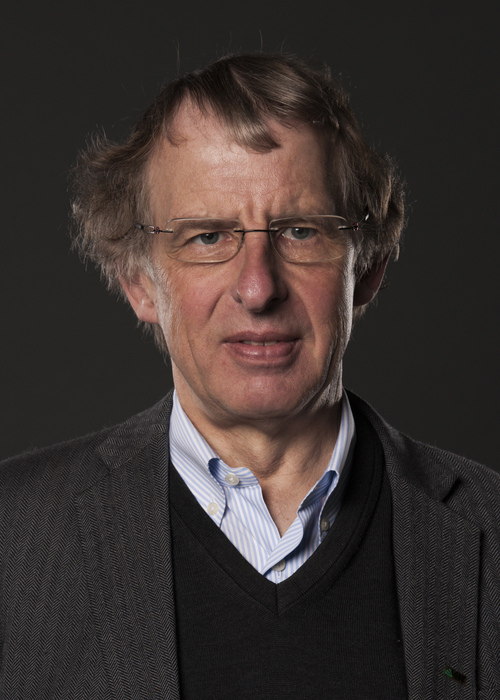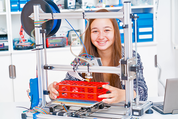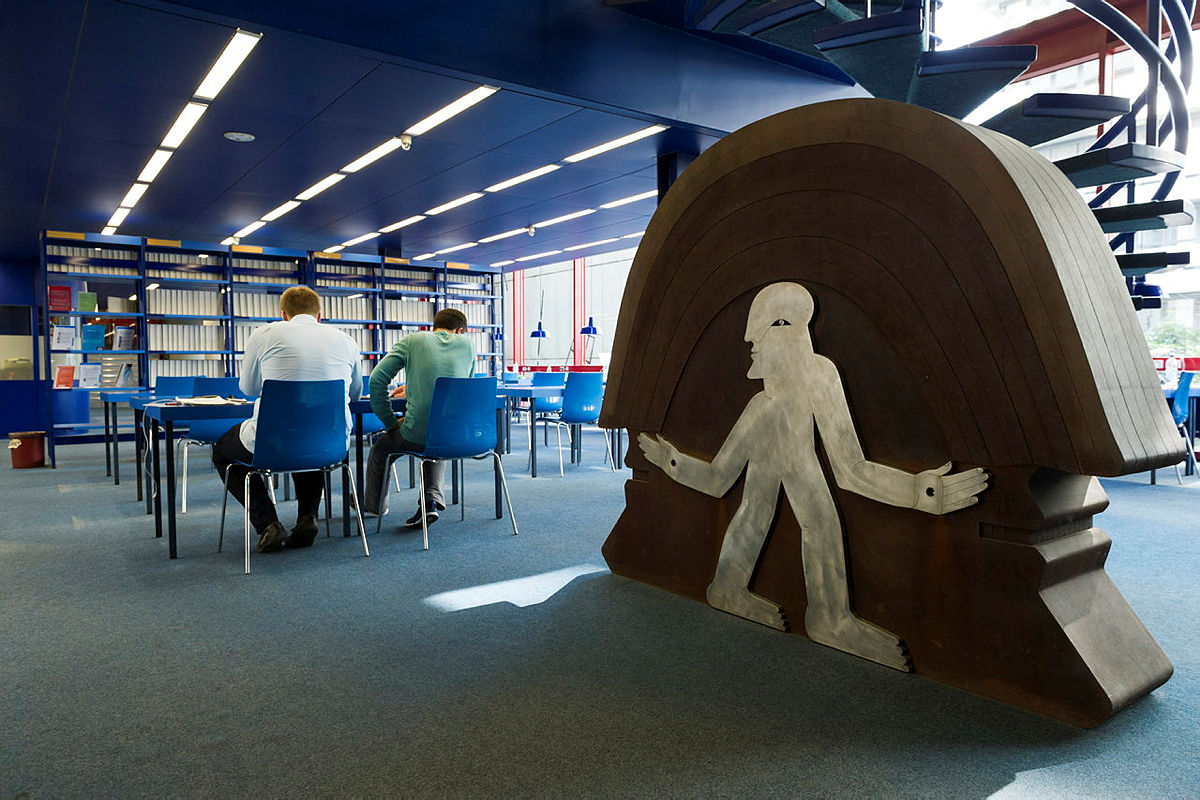
Papers, lectures, proceedings, book contributions, patents
link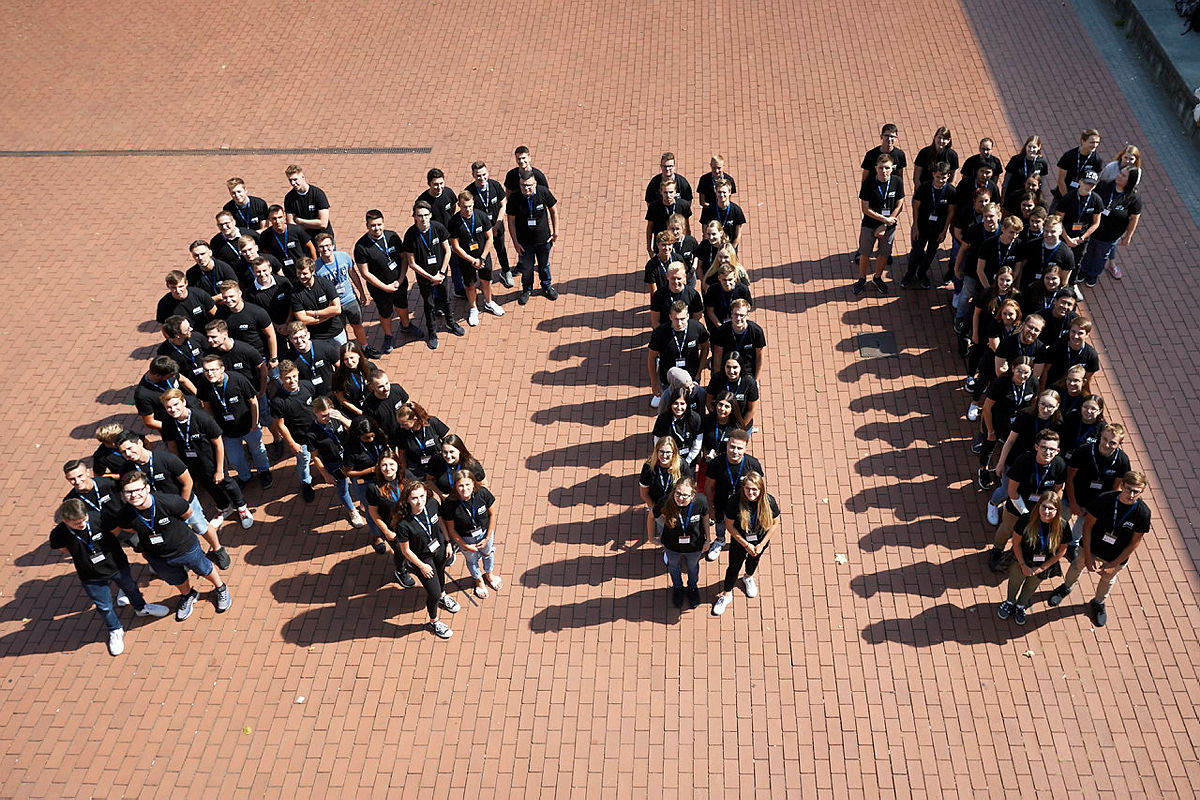
Awards and prizes for employees of the IFG
link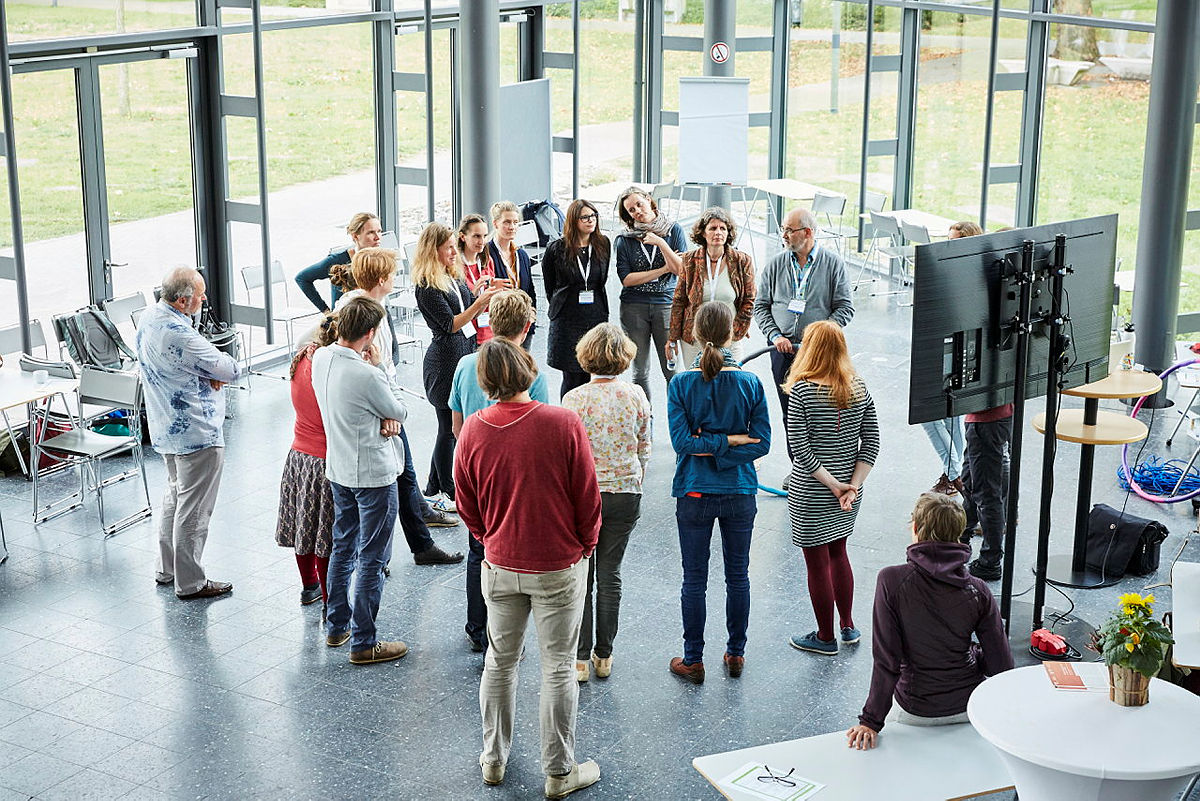
All employees of the IFG in alphabetical order
link
Press and KIT Relaeses of IFG
link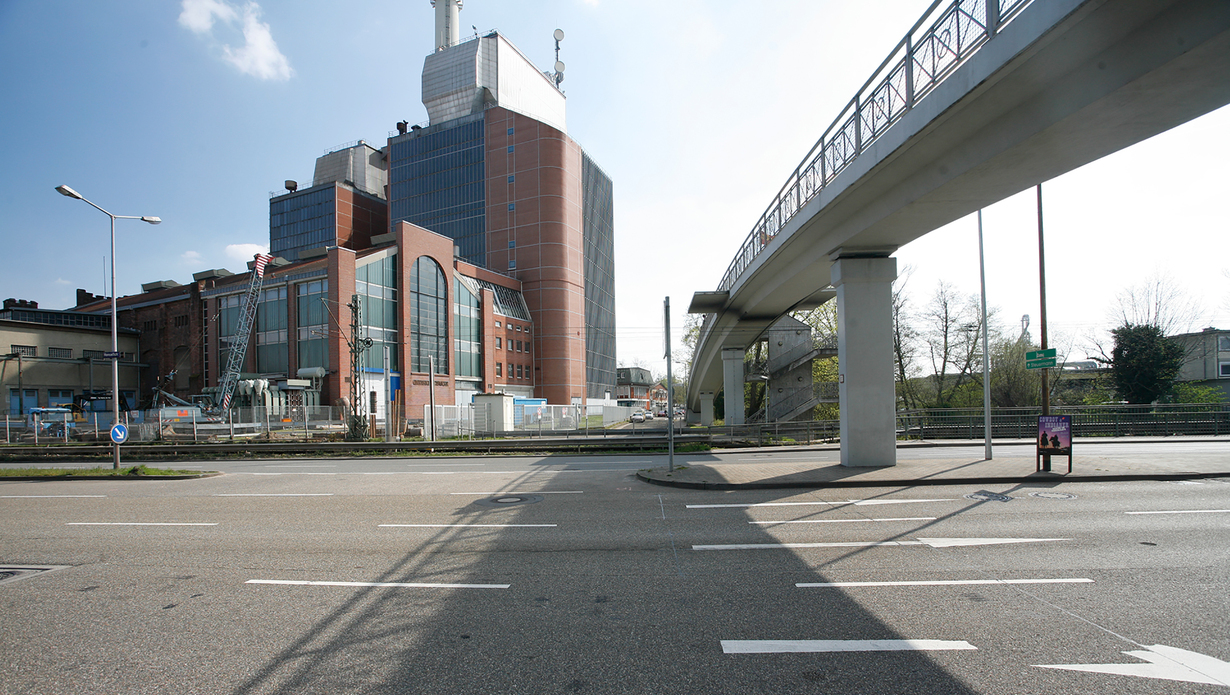
Creating disruptive innovations for sustainable infrastructure in transport, energy, water and municipal infrastructure.
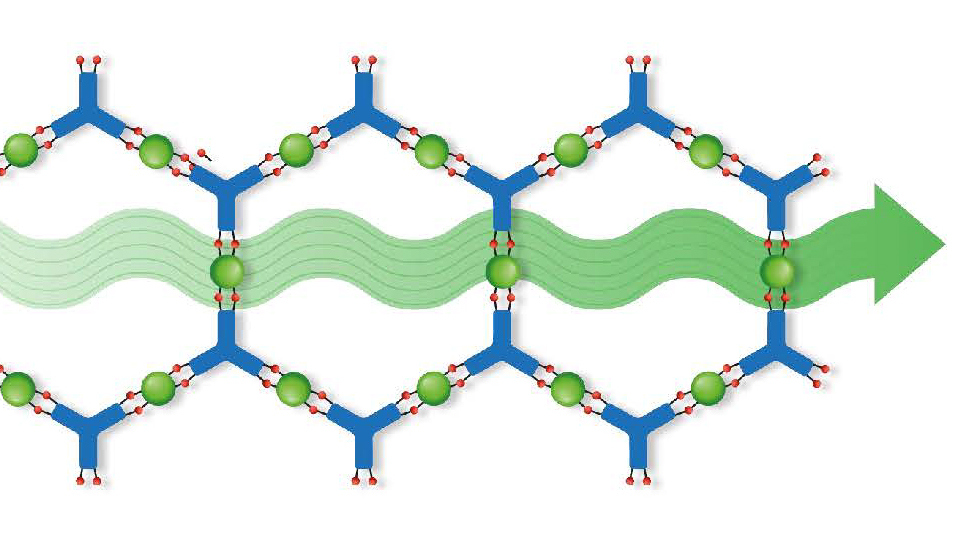
Metal-organic frameworks (MOFs) are characterised by high porosity and a customisable structure. They have enormous potential, for example for applications in electronics. However, their low electrical conductivity has so far severely limited their use. With the help of AI- and robot-assisted synthesis in a self-controlled laboratory, researchers at the Karlsruhe Institute of Technology (KIT), together with colleagues in Germany and Brazil, have now succeeded in producing a MOF thin film that conducts electricity like metals. This opens up new possibilities in electronics and energy storage - from sensors and quantum materials to functional materials. The team reports in the journal Materials Horizons. (DOI: 10.1039/d5mh00813a)

On April 5th, eight girls could inform themselves about "Macro-, Micro- and Nano-structured polymer materials" with us. Together with Jonas Wohlgemuth, Juliane Diehm and the trainees in the field of chemistry, the 3D-printers at the MakerSpace were operated, including CAD construction with Autodesk Fusion. Afterwards the program continued in the labs of the department "Advanced Polymers and Biomaterials" at the IFG. Dr. Meike König and Dr. Martina Plank demonstrated the Chemical Vapor Deposition setup for the fabrication of nanostructured thin films and their characterization via Scanning Electron Microscopy. Secondly, the making of polymer fibers was shown, where the girls were able to prepare multi-compartmental "alginate spaghetti" themselves. The day concluded back at the Makerspace, where the remaining 3D-printed objects were taken from the printers and final ideas of construction could be realized.

Scientists from Karlsruhe Institute of Technology (KIT) and the Indian Institute of Technology Guwahati (IITG) have developed a surface material that repels water droplets almost completely. Using an entirely innovative process, they changed metal-organic frameworks (MOFs) – artificially designed materials with novel properties – by grafting hydrocarbon chains. The resulting superhydrophobic (extremely water-repellent) properties are interesting for use as self-cleaning surfaces that need to be robust against environmental influences, such as on automobiles or in architecture. The study was published in the Materials Horizons journal.(DOI: 10.1039/D4MH00899E)

Founded in July 2024, the spin-off CAVIGEN (UG) from Prof. Dr. Gottwald's working group is developing advanced 3D cell culture systems based on polymer films coated with oxygen-sensitive fluorophores, thus enabling the measurement of oxygen and its gradients in 3D cell culture systems for the first time worldwide. This enables a more realistic simulation of human organ functions with the help of so-called organoids, which can replace animal experiments.
More (German)

On June 12, 2024, the winners of this year's NEULAND Innovation Contest were honored by the Vice President Transfer and International Affairs, Prof. Dr. Thomas Hirth, together with representatives of the supporting companies.
2nd Prize: "RareCycle - Magnetic chromatography for the rare earth recycling of the future"
by apl. Prof. Dr.-Ing. Matthias Franzreb, Dr.-Ing. André Tschöpe, M. Sc. Laura Kuger
Institute of Functional Interfaces (IFG)
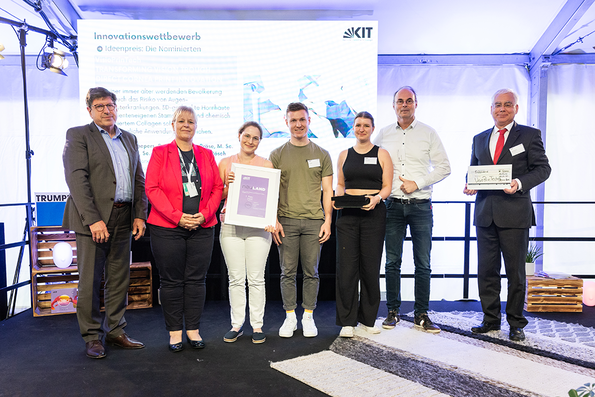
On June 12, 2024, the winners of this year's NEULAND Innovation Contest were honored by the Vice President Transfer and International Affairs, Prof. Dr. Thomas Hirth, together with representatives of the supporting companies.
1st Prize: "VisioPrinTech- Changing vision through the innovation of direct corneal pressure"
by Prof. Dr. Ute Schepers, Prof. Dr. Stefan Bräse, M. Sc. Lea Franzreb, M. Sc. Eric Pohl, M. Sc. Anna Rösch
Institute for Functional Interfaces (IFG), Institute for Biological and Chemical Systems (IBCS-FMS)

Professor Luisa De Cola, Group leader of the working Group Nanomedicine on IFG, is the winner: 2024 of Centenary Prize for Chemistry and Communication. For innovative studies on how photophysically active materials and nanostructures may be fabricated for deployment within active biological systems targeting future healthcare solutions, and for excellence in communication.
Professor De Cola’s research lies at the interface between chemistry, biology and medicine with the aim of finding new therapies, detecting pathogens quickly, and investigating processes activated by the aggregation of small molecules.
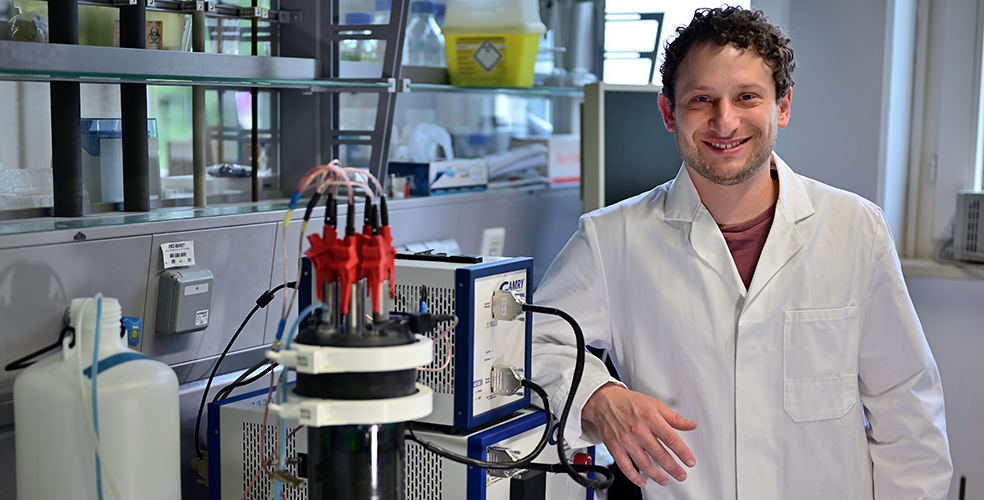
Electrochemical reactors are part of many technological processes, for example in wastewater treatment or in the production of biofuels. They are also increasingly being used in inorganic and organic synthesis reactions and in connection with enzymatic conversions. One challenge here is scaling up from the laboratory to industrial applications. Researchers of KIT (IFG) have developed an innovative reactor design to harness the promising potential of the technology on an industrial scale.

Researchers at KIT have developed a highly precise electronic nose with an artificial sense of smell to distinguish odours quickly and objectively. The efficient training based on artificial intelligence (AI) makes the KIT invention by Prof Nick and Prof Wöll stand out from the crowd of comparable competitor systems. It makes the e-nose from Baden flexible and versatile. The Karlsruhe researchers are also ahead in two respects. The technology is relatively inexpensive because it uses cheap quartz oscillators, which are used in mobile phones, among other things. In contrast to the fridge-sized mass spectrometers that "sniff" various substances in laboratories, the artificial dog snout is also very compact. "In principle, it's an add-on that can be attached to a mobile phone," explains materials researcher Wöll.

A warm summer day, a breath of sea air, a rainy autumn day - everything has its own smell. So does food that is very fresh or unfortunately already bad. Many people can rely on their nose to tell them whether they can still eat the food or not. But some people are denied this because their sense of smell doesn't work quite as well. Scientists at the Karlsruhe Institute of Technology (KIT) in Karlsruhe have now also succeeded in doing what a sniffer dog can easily do with different smells in the field of plant biology. Find out exactly how the sensors work and what role artificial intelligence plays here in the interview with Prof. Dr. Dr. h.c. C. Wöll, Director of the Institute for Functional Interfaces.
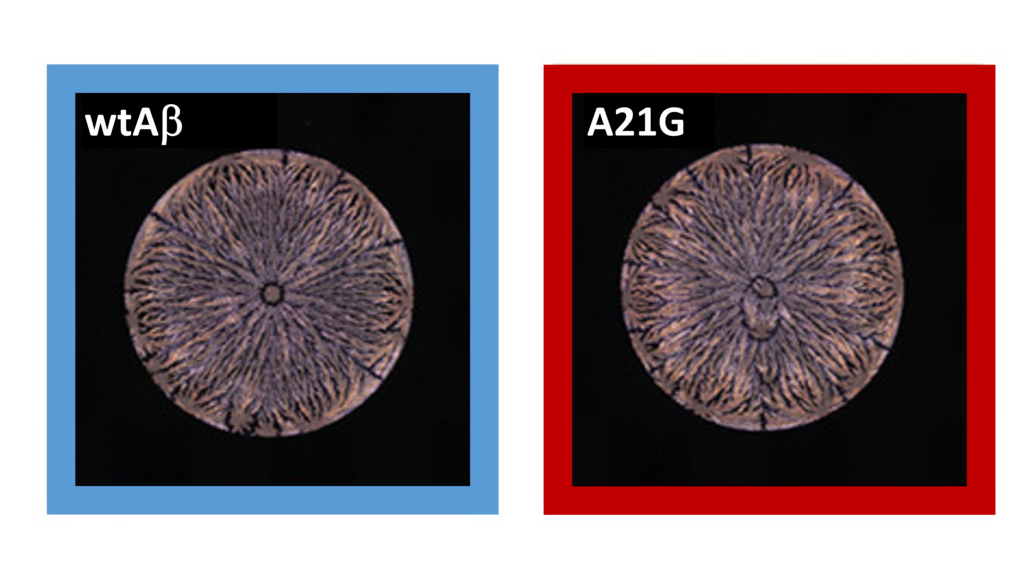
Neurodegenerative diseases such as Alzheimer's or Parkinson's are caused by misfolding of proteins or peptides, i.e. by changes in their spatial structure. The cause is the smallest deviations in the chemical composition of the biomolecules. Researchers at the Karlsruhe Institute of Technology (KIT) have now developed an effective and simple method that can detect such misfoldings at an early stage of the disease. According to this method, misfoldings are revealed by the drying structure of protein and peptide solutions. Microscopic images are analysed with neuronal networks, the prediction accuracy is over 99 percent. The results were published in Advanced Materials.
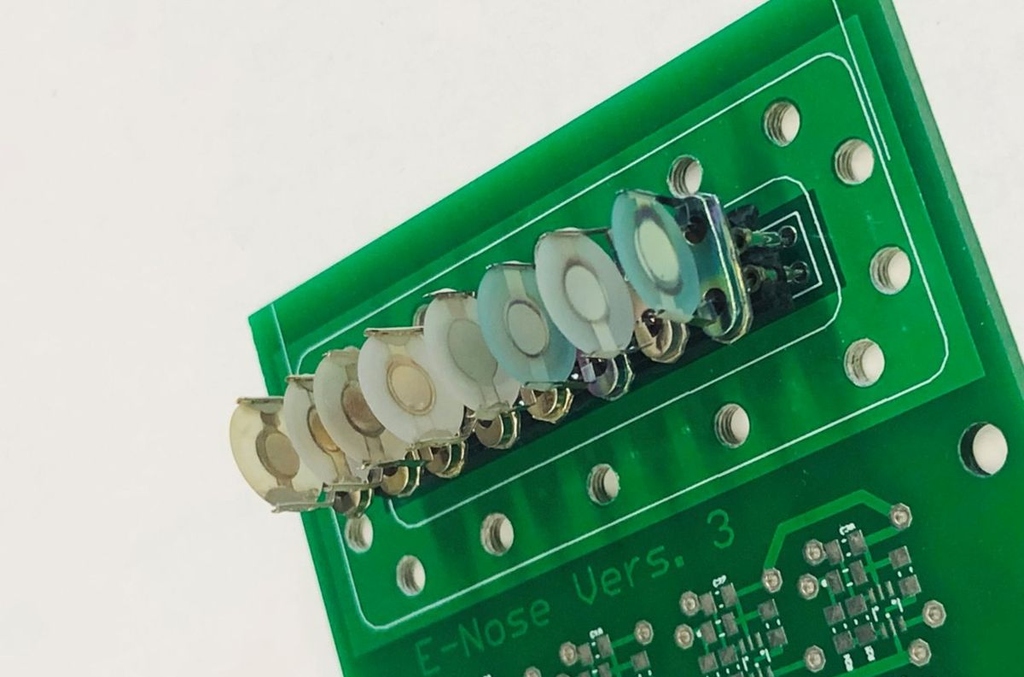
A machine-trained sensor developed at KIT with films of metal-organic frameworks detects volatile organic compounds in mixtures. Invisible but potentially harmful are volatile organic compounds (VOCs), such as those released during the processing of paints and building materials. The crystalline, highly porous MOFs are ideally suited for sensor technology because they can be varied in many ways and precisely adjusted to the substances to be detected. First, the researchers led by Lars Heinke at the KIT Institute for Functional Interfaces applied six different MOF films to quartz crystal microbalances. Then the neural network responsible for analysing the sensor data was trained using machine learning methods. As the team reports in the journal ACS Sensors, the "e-nose" detected the three different xylene isomers in mixtures highly reliably and accurately.

Material development generates large amounts of data that are processed in supercomputers such as the ForHLR high-performance research computer at KIT. The NFDI consortium FAIRmat has set itself the task of making this data more usable (NFDI=National Research Data Infrastructure). In the field of materials research, the NFDI consortium FAIRmat applies the FAIR principles - Findable, Accessible, Interoperable (linkable with other data) and Reusable - which are prerequisites for sustainably usable research data. This allows research data from experimental studies and computer simulations to be archived and made available. "In energy, environmental and mobility research, many new materials are being developed. The already existing data sets represent a valuable raw material for this that has hardly been used so far," says Christof Wöll, one of the co-authors of the study and head of the Institute for Functional Interfaces at KIT.
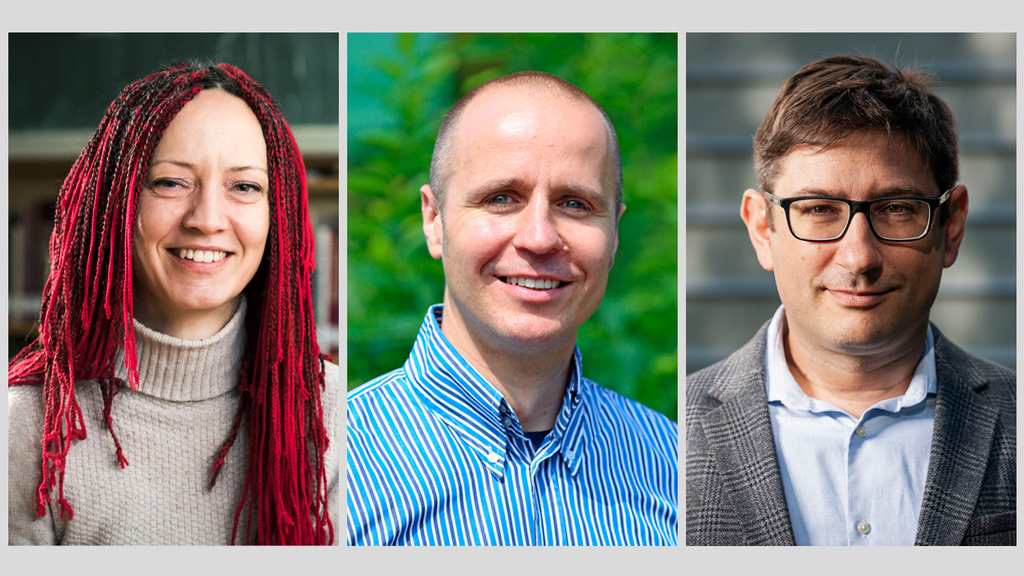
Researchers of Karlsruhe Institute of Technology (KIT) were very successful in the 2021 competition for the renowned Consolidator Grants of the European Research Council. For their projects on hydrogen embrittlement, ion dynamics, and digital art, materials researcher Christoph Kirchlechner, physical chemist Lars Heinke, and art historian Inge Hinterwaldner, respectively, will receive up to EUR 2 million each for the next five years.
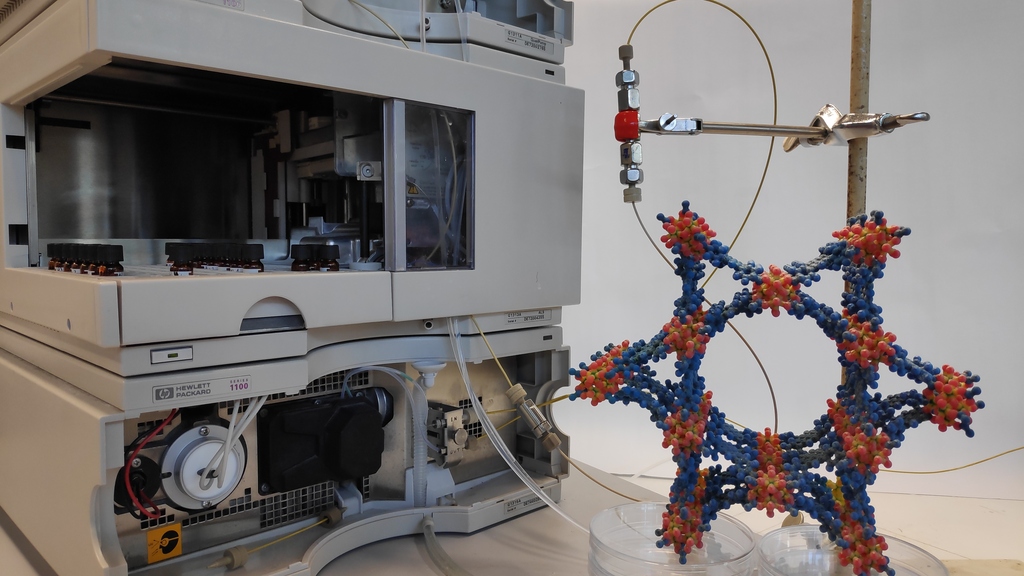
Metal-organic framework compounds (MOFs) increase the stability of biocatalysts and enable their use also in organic solvents - KIT researchers demonstrate enzyme MOF flow reactor. As biocatalysts, enzymes accelerate many chemical reactions. Researchers at the Karlsruhe Institute of Technology (KIT) have now incorporated enzymes into metal-organic cages (MOFs). They then demonstrated for the first time that the stabilisation provided by these framework structures is even sufficient for the enzymes to be used in a continuously operated reactor. Also new: The enzymes embedded in MOFs can be used not only in aqueous but also in organic solvents. The researchers report in the journal Angewandte Chemie (DOI: 10.1002/anie.202117144).

Researchers at the Karlsruhe Institute of Technology (KIT) have used artificial intelligence to determine synthesis strategies for previously unknown metal-organic framework compounds (MOFs). These highly porous crystalline materials can be tailored for a wide range of applications such as material separation, gas storage, catalysis and sensor technology.
World's first MOF synthesis database
In the journal Angewandte Chemie, the researchers now report how machine learning (ML) can be used to streamline MOF development. "In this process, the synthesis conditions of a MOF are predicted directly based on the crystal structure," explains Manuel Tsotsalas from the KIT Institute for Functional Interfaces, which conducted the study together with the KIT Institute for Theoretical Computer Science.
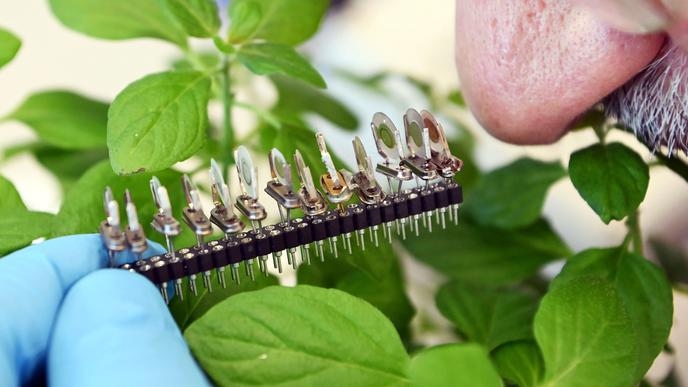
Anyone who wants to distinguish between plants in nature needs a lot of experience, an identification book, or a good nose: In this respect, there could soon be technical support in the literal sense. KIT wants to use an "electronic nose" to unmask counterfeits of expensive teas, for example. The sensor is trained with different mints. In the future, an "electronic nose" will help distinguish between certain plants. This could, for example, unmask counterfeits of expensive teas, says Christof Wöll from the Institute for Functional Interfaces at the Karlsruhe Institute of Technology (KIT). An attachment for smartphones is also conceivable, he says, so that people have the right sniffer with them when searching for plants in nature. "The cell phone then serves as a data center." The researchers cite medical diagnostics and quality control in pharmaceuticals as other possible applications. Scents are to be deposited on the surface of twelve special sensors, each consisting of two electrodes with a quartz crystal. This changes their so-called resonance frequency; the data is used to create a kind of fingerprint of the respective scent.
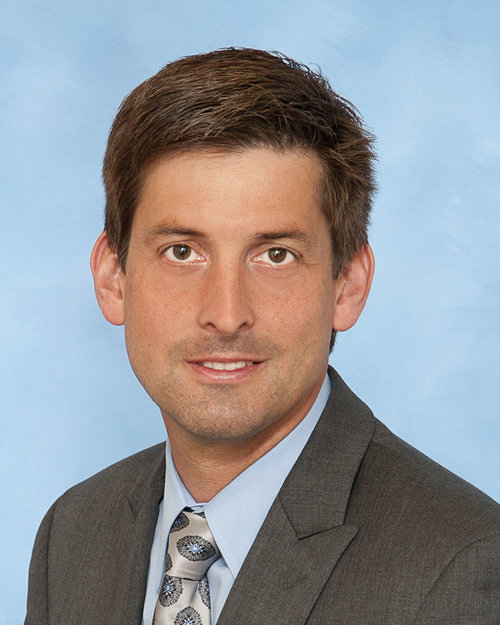
On 07.12.21, Prof. Dr Joerg Lahann (Head of the IFG's Department of New Polymers and Biomaterials and Codirector of the IFG) was named an NAI Fellow by the National Academy of Inventors (NAI).
The NAI Fellow programme recognises academic inventors who have demonstrated their innovative spirit in creating or promoting outstanding inventions that have a tangible impact on the quality of life, economic development and the well-being of society. The NAI Fellow designation is the highest professional honour bestowed exclusively on academic inventors.
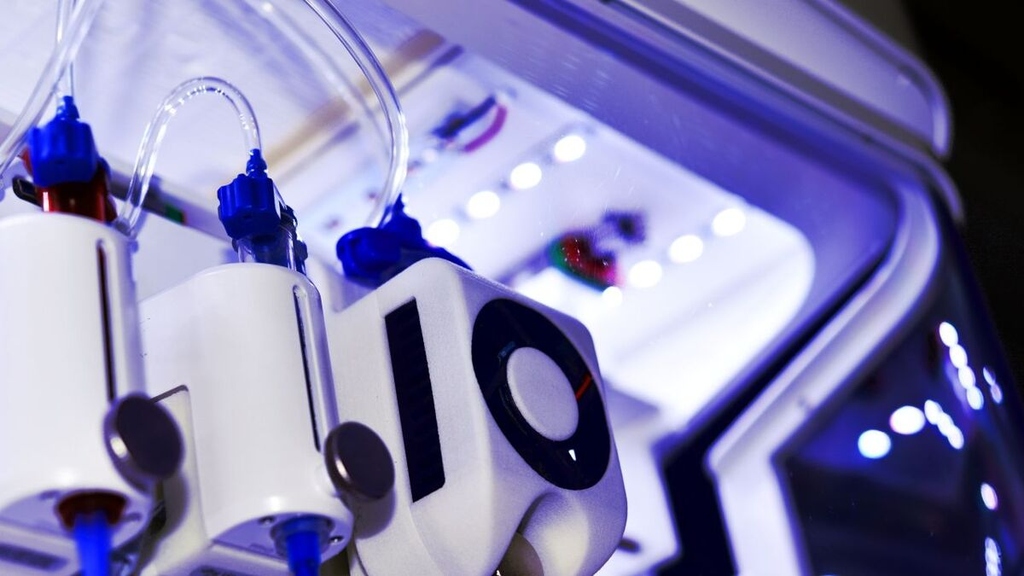
With extrusion-based bioprinting, a special 3D printing technique, cells and tissue-like materials can be assembled into customised objects. This should make it possible in future to produce tissue models for pharmaceutical and medical applications. In order to standardise the process flows in bioprinting, a Germany-wide round robin test will start in October in the SOP_BioPrint project, which is coordinated at the Karlsruhe Institute of Technology (KIT). The Federal Ministry of Education and Research is funding the project with 3.15 million euros, of which KIT will receive 1.1 million euros for the development of methods for process control and analysis. "With the inter-location round robin test, data for comparability will be created for the first time, mapping all steps of the complex 3D printing process in bioprinting," explains Jürgen Hubbuch from KIT's Institute for Functional Interfaces. "In addition to the experimental part, the focus is on creating an infrastructure for data storage and data management through a database."
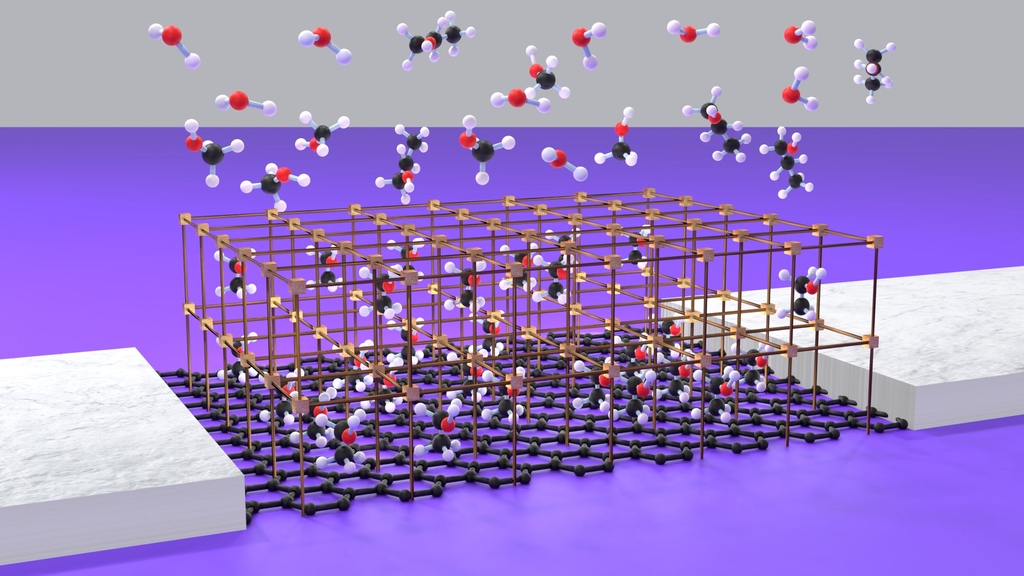
Researchers at the Karlsruhe Institute of Technology (KIT) [INT and IFG] and the Technical University of Darmstadt have developed a novel sensor for gas molecules. For this purpose, they have combined a graphene transistor with a customised metal-organic coating. The innovative sensor detects molecules specifically and accurately and paves the way for a whole new class of sensors. As a prototypical example, the group demonstrates an ethanol sensor that reacts neither to other alcohols nor to moisture. They report on their results in Advanced Materials. (DOI: 10.1002/adma.202103316)
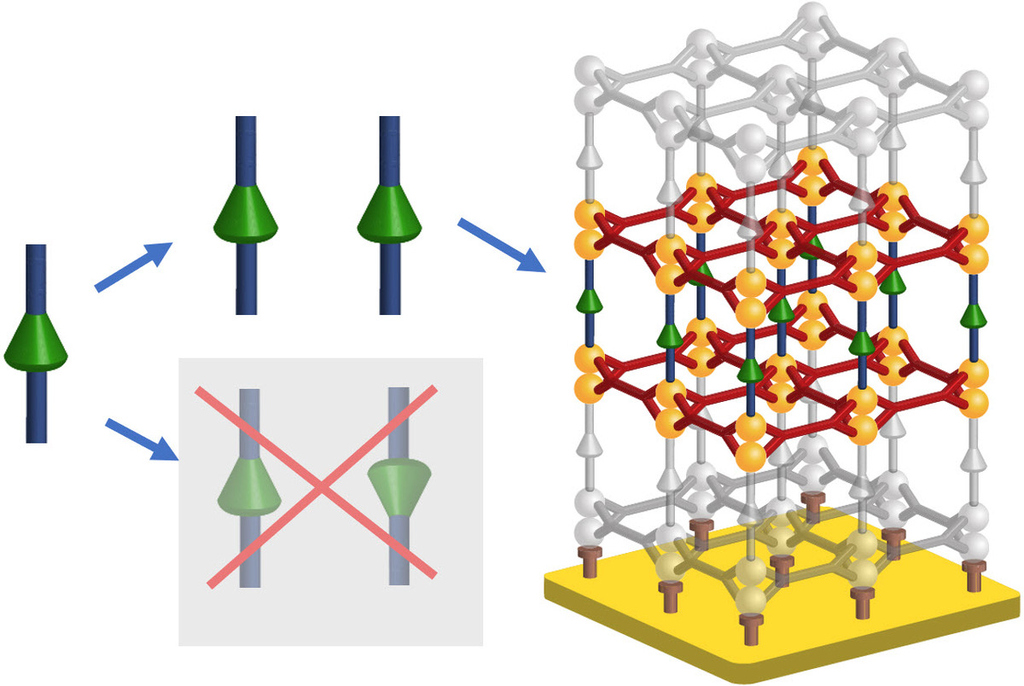
A research group at the Karlsruhe Institute of Technology (KIT) has succeeded in avoiding the symmetry trap through programmed arrangement and aligning asymmetric building blocks on a macroscopic scale. The results were published in the journal Advanced Materials."After several years of research, we have for the first time created porous crystalline layers that exhibit an internal electric field," reports Christof Wöll from the KIT Institute for Functional Interfaces. "In addition, we were able to demonstrate that these layers show optical frequency doubling."The University of Heidelberg is also involved in the research project, which is part of the Cluster of Excellence 3D Matter Made to Order; researchers from Graz and Berlin were also involved in the cooperation.
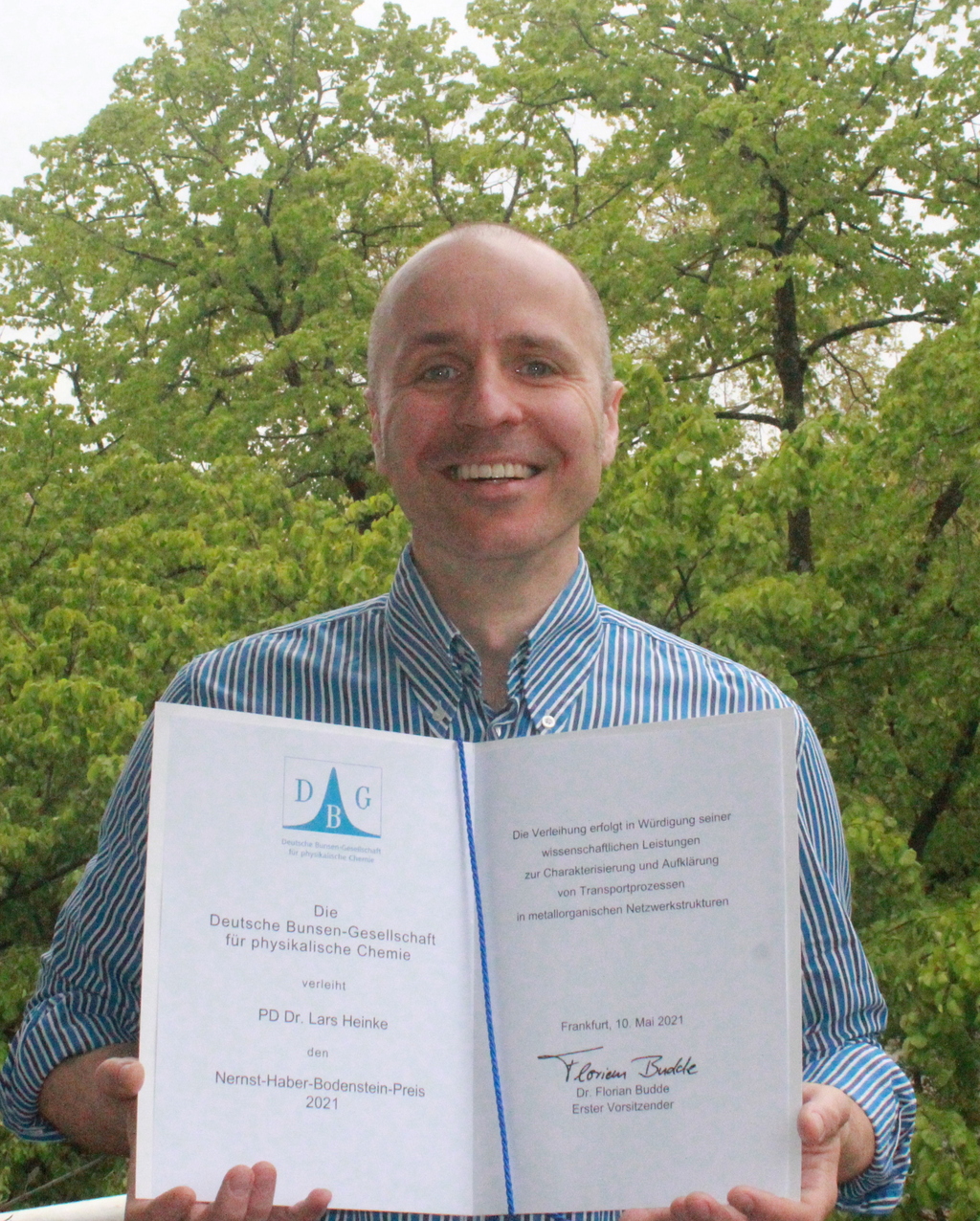
The German Bunsen Society for Physical Chemistry has awarded Lars Heinke, Institute for Functional Interfaces, the Nernst-Haber-Bodenstein Prize, which is considered the most important prize for young physicochemical scientists in Germany.
More (German)

In nature, plant fragrances attract insects, for example. But they are also used in industry, for example in the production of perfumes and aromas. In order to distinguish the scents of mint in particular reliably, quickly and objectively, researchers at the Karlsruhe Institute of Technology (KIT) have developed an electronic nose with an artificial sense of smell in an interdisciplinary collaboration: With high precision, it can recognise different types of mint - making it suitable for applications ranging from pharmaceutical quality control to the observation of mint oil as an environmentally friendly bioherbicide.
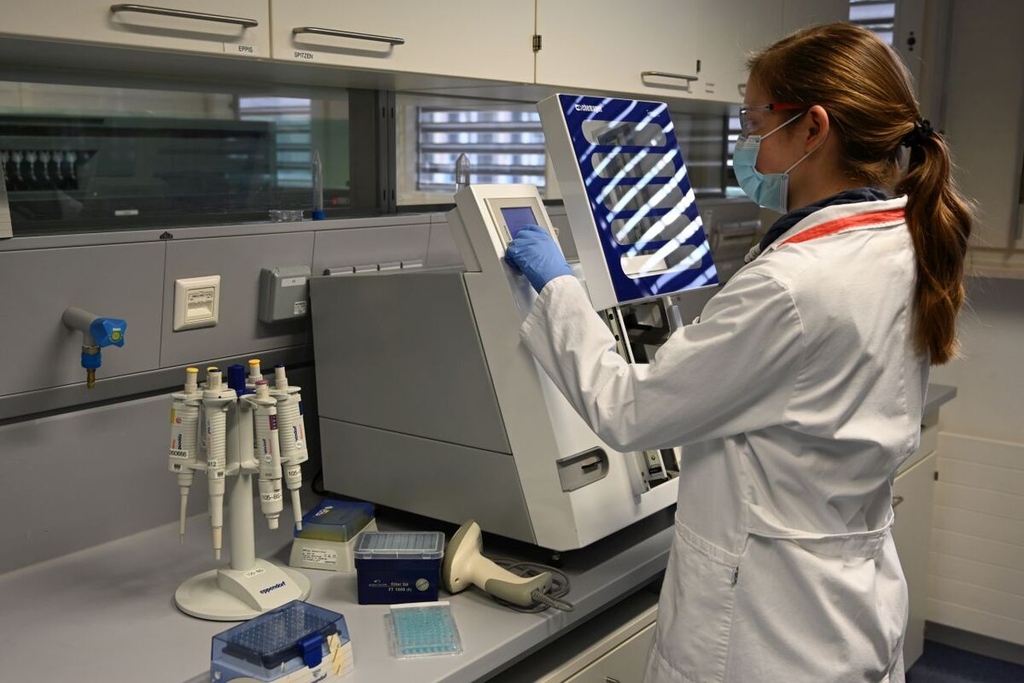
The PCR test is currently the most reliable method to detect an infection with SARS-CoV-2. Fragments of the genetic material of the virus are detected. The genetic material contained in the smear must first be purified and concentrated. The most effective methods use specially coated magnetic particles for this purification. An invention by KIT scientists makes this complex method more efficient.
It was developed by Matthias Franzreb and Jonas Wohlgemuth at the KIT Institute for Functional Interfaces. In their method, the particles are manipulated with metal needles whose magnetic attraction can be switched on and off from the outside. This allows the particles to be transported to a new vessel for the next purification step, where they are rapidly rotated to redistribute the DNA fragments - like tiny stirrers. The process runs quickly and fully automatically with 96 needles simultaneously. "This allows the genetic material to be extracted from 96 samples in 30 minutes," explains Franzreb. "So one device can prepare more than 4 000 samples in 24 hours."

For neurological diseases such as Parkinson's, deep brain stimulation (THS) has enabled breakthroughs in treatment. This involves implanting an electrode deep into the brain, which allows microelectronics under the skin to send targeted electrical signals to the site of the electrode. These interrupt the neurological "interference fire" that triggers the disease.
Until now, however, inserting the electrodes has required surgery, which carries the risk of bleeding and infection. An international team, including a KIT scientist, has now developed a method in which nanoscale particulate electrodes are injected and controlled wirelessly. The results have been published in Science Advances.
_rdax_98s.jpg)
Catalysts are indispensable for many technologies. To further improve heterogeneous catalysts, it is required to analyze the complex processes on their surfaces, where the active sites are located. Scientists of Karlsruhe Institute of Technology (KIT), together with colleagues from Spain and Argentina, have now reached decisive progress: As reported in Physical Review Letters, they use calculation methods with so-called hybrid functionals for the reliable interpretation of experimental data. (DOI: 10.1103/PhysRevLett.125.256101).
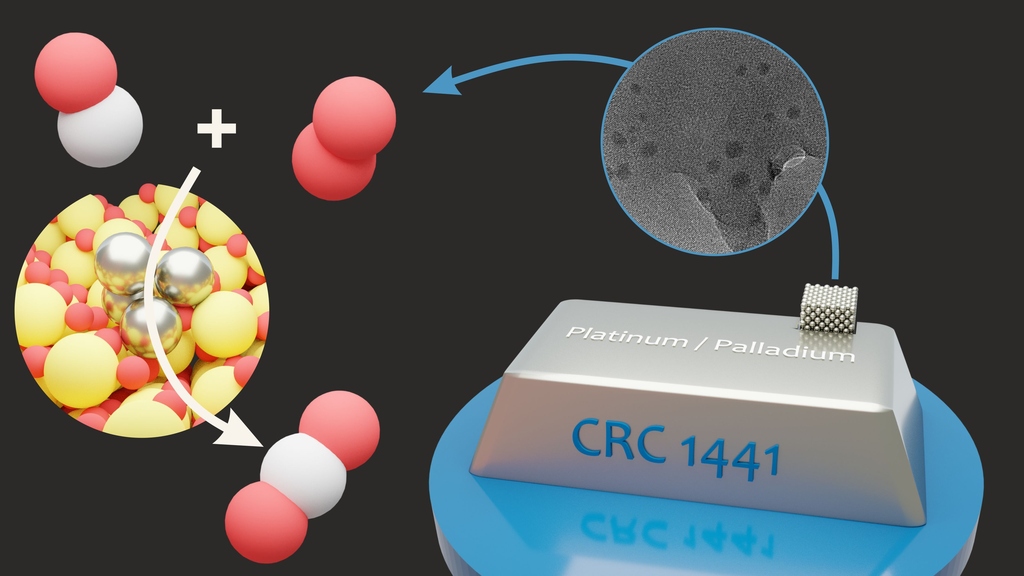
Heterogeneous catalysts based on noble metal clusters and particles play an important role in chemical processes and can effectively reduce harmful emissions. However, they are far more dynamic than assumed so far and many of the occurring effects are poorly understood. The German Research Foundation (DFG) now funds a new Collaborative Research Center at Karlsruhe Institute of Technology (KIT) that is aimed at holistically understanding catalytic processes: “TrackAct – Tracking the Active Site in Heterogeneous Catalysis for Emission Control.”
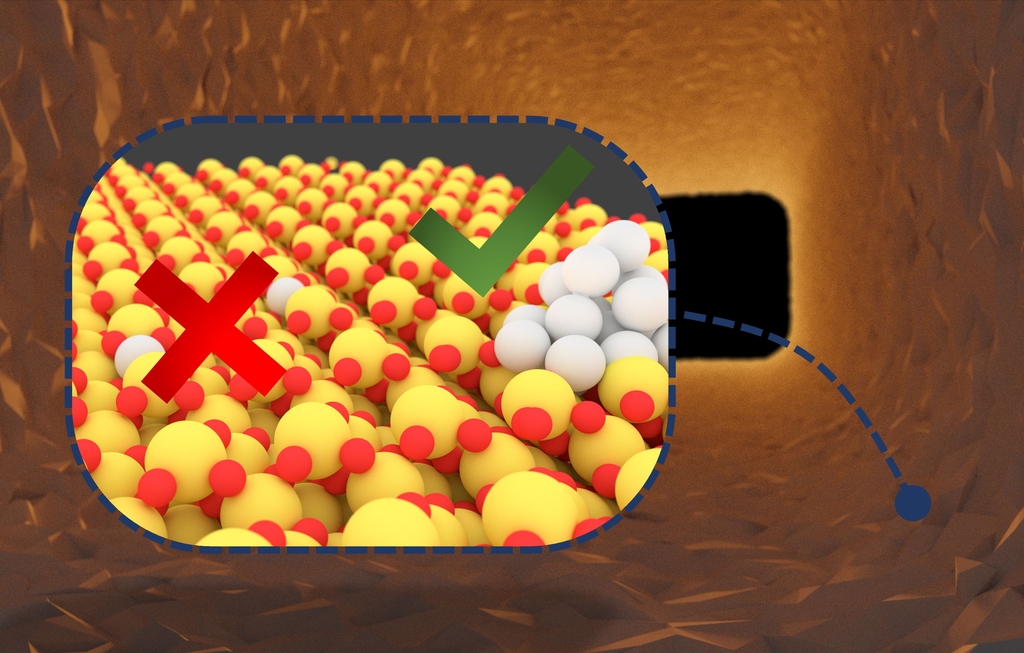
Billions of noble metal catalysts are used worldwide for the production of chemicals, energy generation, or cleaning the air. However, the resources required for this purpose are expensive and their availability is limited. To optimize the use of resources, catalysts based on single metal atoms have been developed. A research team of Karlsruhe Institute of Technology (KIT) demonstrated that noble metal atoms may assemble to form clusters under certain conditions. These clusters are more reactive than the single atoms and, hence, exhaust gases can be much better removed. The results are reported in Nature Catalysis (DOI: 10.1038/s41929-020-00508-7)
 On 25th October 2019 Prof. Wöll was awarded the honorary doctoral degree from the University of Southern Denmark. On 25th October 2019 Prof. Wöll was awarded the honorary doctoral degree from the University of Southern Denmark.In honor of his achievments in the development of organic thin films in general and his groundbreaking work on metal-organic frameworks Prof. Wöll was awarded the honorary doctorate from the University of Southern Denmark.
|
 Nature Scientific Reports: Publication on antibiotic resistance Nature Scientific Reports: Publication on antibiotic resistanceThe comprehensive reduction of clinically relevant antibiotic resistances from treated wastewater is the topic of the publication in NATURE Scientific Research, published by the Department of Microbiology/Molecular Biology under the direction of Prof. Thomas Schwartz. Oxidative and membrane based methods are compared in combination and subsequent microbiological risks are described. |
 Hazardous waste water: What can be done against more and more harmful germs? Hazardous waste water: What can be done against more and more harmful germs?An article on this topic was published in the FAZ of 3.4.2019, which also refers to the investigations of Prof. Dr. Thomas Schwartz, Department of Microbiology/Molecular Biology at the IFG. As part of a BMBF project, various municipal sewage treatments plants are being investigated for the presence of antibiotic-resistant bacteria and their distribution in the environment is being shown. By means of extended treatment processes it is possible to interrupt these distribution pathways. This is also demanded by the WHO and the UN Assembly. |
 Organic photovoltaics: More energy through channeling Organic photovoltaics: More energy through channelingAn ideal material for photon harvesting must allow control of the exciton diffusion length and directionality. This is necessary in order to guide excitons to a reaction center, where their energy can drive a desired process. To reach this goal both of the following are required; short- and long-range structural order in the material and a detailed understanding of the excitonic transport. Here we present a strategy to realize crystalline chromophore assemblies with bespoke architecture.
|
 Award AwardDr. Hartmut Gliemann received the award "Best Presentation" for his talk with the title "Reducing the influence of relative humidity on the sensitivity of ZnO-based gas sensors by coating with metal- organic frameworks" which was given at the HybridSensorNet Symposium 2018, held from 14.11.-15.11.2018 in Karlsruhe http://hybridsensornet.org/ . |
 New Materials: Growing Polymer Pelts New Materials: Growing Polymer PeltsVapor Deposition of a Liquid Crystal Layer with Reactive Molecules Provides Customized Nanofibers for Different Applications – Publication in Science - Researchers at the Institute of Functional Interfaces (IFG) of KIT, as well as at the University of Michigan, the University of Wisconsin-Madison and Cornell University in Ithaca, New York, have now developed a simple and therefore cost-effective process that allows polymer pelts to grow in a self-organized way. |
 Poster prize Poster prizeAt the conference "Spurenstoffe undKrankheitserreger imWasserkreislauf " of the Dechema Gesellschaft für Chemische Technik und Biotechnologie e.V. on October 23 and 24, 2018 in Frankfurt a.M., Mr. Norman Hembach from the Department of Microbiology / Molecular Biology of the Institute of Functional Interfaces was awarded second place for his poster "Combined advanced processes in wastewater treatment for reduction of antibiotic resistant bacteria". |
 Open PhD and postdoc positions need to be occupied at the Institute of Functional Interfaces Open PhD and postdoc positions need to be occupied at the Institute of Functional InterfacesIn the context of the excellence strategy launched by the federal and state governments within the excellence cluster „3D Matter Made to Order” open PhD and postdoc positions need to be occupied at the Institute of Functional Interfaces. Please contact Prof. Christof Wöll. |
 Kajal Mallick Memorial Prize Kajal Mallick Memorial PrizeDr. Hartmut Gliemann and Peter Krolla (Institute of Functional Interfaces) received the Kajal Mallick Memorial Prize“ together with Prof. Christina Wege (University of Stuttgart) and her group in London. The prize was awarded by the “Institution of Civil Engineers (ICE) Publishing” to the paper with the title “RNA-stabilized protein nanorings: high-precision adapters for biohybrid design” (https://doi.org/10.1680/jbibn.16.00047) as best paper published in 2017 in the ICE Science journals of research in the field of “Bioinspired, Biomimetic and Nanobiomaterials. |
 Entry of antibiotic-resistant bacteria into public waters - a danger? Entry of antibiotic-resistant bacteria into public waters - a danger?Prof. Dr. Thomas Schwartz conducts research on antibiotic-resistant bacteria at the IFG and talks in an interview about hygiene and the danger of colonization.
|
 Multifaceted cerium oxide nanoparticles Multifaceted cerium oxide nanoparticlesUsing carbon monoxide as a probe molecule and infrared reflection absorption spectroscopy (IRRAS), irregularities could be detected on ceroxide nanorods, which probably explain their high catalytic activity. |
 MOFs (SURMOFs) as light switched proton conductors for chemical sensors and fuel cells MOFs (SURMOFs) as light switched proton conductors for chemical sensors and fuel cellsSmall-scale frameworks made of metallic nodes and organic connecting elements are true all-rounders: By combining different materials and varying the pore size and shape, the MOFs (Metal-Organic Frameworks) can be tailored to different applications.
|
 Poster Prize Poster PrizeAt the symposium "Umweltrisiken in der Wasserforschung- Inter- und transdisziplinäre Bewertung und Perspektiven" des Wassernetzwerks Baden-Württemberg 2018 in Karlsruhe, the poster "Metformin im Abwasser beeinflusst die Vitalität von Bachforellen über Veränderungen im Fisch-Mikrobiom" presented by Dipl. Biol. Eike Thorben Rogall from the workgroup of Prof. Dr. Schwartz get rewarded with a poster prize. |
 Ceria Nanoparticles: It Is the Surface that Matters Ceria Nanoparticles: It Is the Surface that MattersNew findings on the structure of catalysts and photocatalysts enable targeted further development of catalysts and photocatalysts - Three publications in the journal Angewandte Chemie |
 Metal-organic Frameworks Used as Looms Metal-organic Frameworks Used as LoomsResearchers of Karlsruhe Institute of Technology (KIT) have made major progress in the production of two-dimensional polymer-based materials. To produce cloths from monomolecular threads, the scientists used SURMOFs, i.e. surface-mounted metal-organic frameworks, developed by KIT. |
 Town of Malsch turns into a living laboratory Town of Malsch turns into a living laboratoryIn the summer of 2016 a new project of the Institute of Functional Interfaces (IFG) of KIT and the Helmholtz Association of German Research Centers piqued the interest of Elmar Himmel, the mayor of the town of Malsch. The project "Prevention in construction" aims at prolonging the service life of infrastructure as bridges, streets, and buildings. |
 Light Opens and Closes Windows in Membranes Light Opens and Closes Windows in MembranesResearchers of Karlsruhe Institute of Technology (KIT) and Universität Hannover developed novel membranes, whose selectivity can be switched dynamically with the help of light. For this purpose, azobenzene molecules were integrated into membranes made of metal-organic frameworks (MOFs). Depending on the irradiation wavelength, these azobenzene units in the MOFs adopt a stretched or angular form. In this way, it is possible to dynamically adjust the permeability of the membrane and the separation factor of gases or liquids. The results are reported in Nature Communications. (DOI:10.1038/ncomms13872) |
 Biodegradable Polymer Coating for Implants Biodegradable Polymer Coating for ImplantsMedical implants often carry surface substrates that release active substances or to which biomolecules or cells can adhere better. However, degradable gas-phase coatings for degradable implants, such as surgical suture materials or scaffolds for tissue culturing, have been lacking so far. In the journal Angewandte Chemie, researchers of Karlsruhe Institute of Technology (under the aegis of Prof. Dr. Lahann) now present a polymer coating that is degraded in the body together with its carrier.
|
 Poster Prize Poster PrizeAt the Jahrestagung der Gesellschaft für Biomaterialien 2016 in Aachen, the Poster entiteled "Nanostructured multifunctional polymer films as hematopoietic stem cell culture substrates" presented by Domenic Kratzer from the workgroup of Dr. Cornelia Lee-Thedieck got rewarded with a poster prize.
|
 Two Become One: How to Turn Green Light Blue Two Become One: How to Turn Green Light BlueMetal-Organic Frameworks with a Piggyback Structure Open up New Possibilities for Solar Cells and LEDs. Researchers at KIT now showed for the first time that the inner interfaces between surface-mounted metal-organic frameworks (SURMOFs) are suited perfectly for this purpose.
|
_rdax_82x58s.jpg) Durable prostheses and implants Durable prostheses and implantsA crystalline layer of hydroxyapatite can form a pressure- and tension-resistant bond to bones or teeth. Scientists from the Institute of Functional Interfaces (IFG) at the KIT have succeeded in growing layers of hydroxyapatite on silicon surfaces.
|
 High awards for chemists of the IFG High awards for chemists of the IFGDr. Lars Heinke was awarded the Lecturer Prize of the "Fond der Chemischen Industrie" at the beginning of May. Heinke is investigating thin films of metal-organic framework (MOF) compounds, focusing on remote-controlled MOF materials, which are realized by using light-switchable molecules as building units for the MOF materials.
|
 High awards for chemist of the IFG High awards for chemist of the IFGAt the beginning of May, Prof. Dr. Christof Wöll was awarded the van't Hoff Prize of the German Bunsen Society for Physical Chemistry. The award recognizes his important contributions to the understanding of organic thin films, to the chemistry of oxidic interfaces and in particular to the
|
 Infrastructure – Prevention Is Better than Cure Infrastructure – Prevention Is Better than CureHelmholtz Association and KIT Start the Innovation Hub “Prevention in Construction” / Industry, Administration, and Science Want to Extend Lifecycles of Roads and Buildings. |
 Do multi-resistant germs spread through waste water? Do multi-resistant germs spread through waste water?The team of Prof. Thomas Schwartz investigates the pathways of antibiotic-resistant bacteria and antibiotic resistance genes into the aquatic environment and evaluates technical methods to interrupt the spread of these bacteria. The feedback back to humans through contact with water, waste water or in hospitals will also be investigated (microbial dissemination).
|
 Proteins in the wash cycle Proteins in the wash cycleHow Prof. Matthias Franzreb and ANDRITZ KMPT GmbH intend to change the biotechnology and pharmaceutical industries with swirling magnetic particles. |
 Reducing costs in semiconductor manufacturing Reducing costs in semiconductor manufacturingMineral layer enables high doping densities of semiconductors and simplifies the production process. |
 Arrived in the community: Arrived in the community:Spektrum der Wissenschaft publishes articles on porphyrin-based highly ordered surface-anchored metal-organic frameworks (SURMOFs) used as solar cells.
|
 Detector for phosphorus Detector for phosphorusKIT scientists are developing an automatable detection method for phosphorus that does not require the use of chemicals.
|
In episode 6 of the KIT video series " Biology and Technology ", Prof. Matthias Franzreb tells Carsten how reactors can be produced with the help of a 3-D printer and what these reactors are capable of.
|
_rdax_82x55p.jpg) First 3-D printing competition at the Baden-Württemberg Research Day Foundation First 3-D printing competition at the Baden-Württemberg Research Day Foundation |
 First Solar Cell Made of Highly Ordered Molecular Frameworks First Solar Cell Made of Highly Ordered Molecular FrameworksNew Material Based on Metal-organic Frameworks (MOFs) Is Suited for Photovoltaics/Publication in the Journal Angewandte Chemie International Edition |
 Pseudoparticles Travel through Photoactive Material Pseudoparticles Travel through Photoactive MaterialKIT Scientists Measure Important Process in the Conversion of Light Energy. |
 Departure to the unknown Departure to the unknownHow Christof Wöll and Hartmut Gliemann are pioneering a new molecular platform technology. |
 Appointment as honorary professor Appointment as honorary professorThe Rector of the Mannheim University of Applied Sciences appoints Dr. rer. nat. Thomas Schwartz as honorary professor. |
 Posterpreis PosterpreisSURMOF based „Designer Solids“ as Photonic Nanomaterials for Optical and LHs Applications. |
 Free Pores for Molecule Transport Free Pores for Molecule TransportResearchers Identify Cause of Surface Barriers of Metal-Organic Frameworks (MOFs) – Relevant to Gas Storage. |
 Polymer Coatings Based on Molecular Structures Polymer Coatings Based on Molecular StructuresKIT Researchers Developing a Novel Gel for Biological and Medical Applications |
 Staff StaffProf. Dr. Christof Wöll is a new member of the Leopoldina
|
 Large Pores Large PoresKIT Researchers Develop New Method to Produce Metal-organic Frameworks |
 Porous store for biomolecules Porous store for biomoleculesMetal-organic frameworks (MOFs) provide plenty of space for proteins and chiral compounds. |
 Processes at the Surface of Catalysts Processes at the Surface of Catalysts |
 Flexible Rack Systems Sort Molecules Flexible Rack Systems Sort MoleculesResearchers Develop New Process with Porous Molecular Organic Frameworks (MOFs) |
 Towards a More Efficient Use of Solar Energy Towards a More Efficient Use of Solar EnergyFundamental Findings about the Processes in Photoelectrochemical Cells. |

Savy + SURMOF-EU Projekt
Projekte